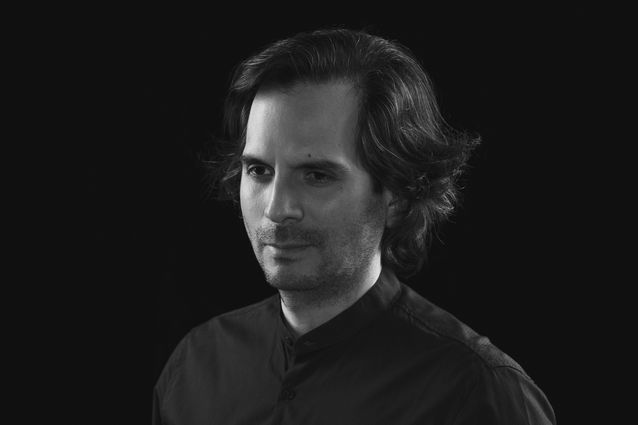
Engagement in practice
Gwyllim Jahn: To begin with, we are interested in understanding how AI is being used in your practices. Xavier, could you explain who in your practice is using AI and what they’re using it for?
Xavier De Kestelier: We work closely with new technologies from both a strategic and a tactical perspective. This task can be challenging in a large company like ours where tools constantly evolve, making traditional methods of change management – such as implementing new software through IT systems and conducting tutorials – nearly impossible.
To address this issue, we held an internal competition a few months ago, asking all employees, including those outside of design roles, to design a treehouse with AI. About 10 percent of our staff participated, and it was a different way of implementing new technology. It reminded us of the shift to 3D technology and the initial reluctance that came with that.
View gallery
Based in London, Xavier De Kestelier is head of design and leader of the design innovation
team at Hassell. As an architect and technologist, he harnesses technology to create more powerful, future-focused design solutions.
Image: supplied
Roland Snooks: Is there anyone at Hassell who is resistant to using AI? Is it the same group of people who are resistant to engaging with 3D modelling?
Xavier De Kestelier: In the past, moving from 2D to 3D drafting or towards parametrics usually attracted the younger generation due to their familiarisation with evolving technology. However, what set our internal competition apart was the interest it generated from senior associates and principals. Twenty percent of the competition participants were from these older, more experienced ranks. I find this noteworthy as it shows a shift in who embraces new technologies within our organization, differing from past digital revolutions.
Automating creative tasks
Gwyllim Jahn: Rafael, how are you currently using AI tools in your practice and what aspects of practice do you think will remain human?
Rafael Contreras: In our architecture firm, we’re currently in the research phase of using AI, which has been ongoing for about a year. Our goal is to create efficiencies and automation – for instance, with AI we can now develop renders or visualisations (usually is a time-consuming task) in seconds. This allows us to quickly convert two- and three-dimensional sketches into rendered images and materialise our ideas in a short period of time.
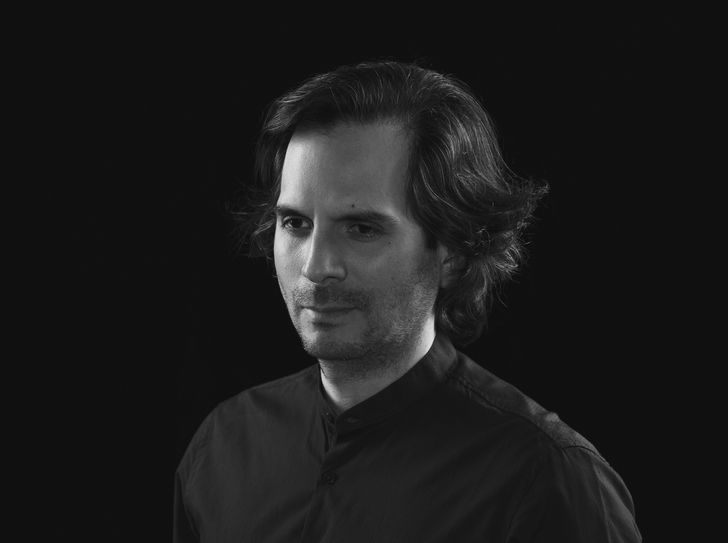
View gallery
Rafael Contreras is co-founder of Contreras Earl Architecture, which uses advanced software, robotics, materials and construction
processes to explore creative, avant-garde ideas for the benefit of the environment and people.
Image: supplied
What’s remarkable is how AI would allow us to accelerate the design process. Architectural documentation is traditionally a slow process – it’s absurd how much time we architects spend on developing a project. So we are exploring ways to make this process more efficient and less arduous.
Moreover, AI tools have enhanced our project initiation. They enable team members – even those not skilled in 3D software – to express their ideas, fostering more engagement. While we’re still in the early stages of AI, we’re focused on understanding and maximising these tools to improve efficiencies in every aspect of our work.
Automating a practice’s style
Roland Snooks: James, at Wardle, you’re training Stable Diffusion models on the body of the practice’s work. How does that change the nature of design in the office, and what effect has this had on the projects?
James Loder: We’ve been exploring the use of Stable Diffusion in our processes, primarily for image generation. Initially, it produced content that was essentially a mix of our past projects, which was not exactly what we were aiming for. This approach seemed to limit our work by cutting off external influences. In contrast, our experience with Midjourney, which taps into a broader dataset, has been different.
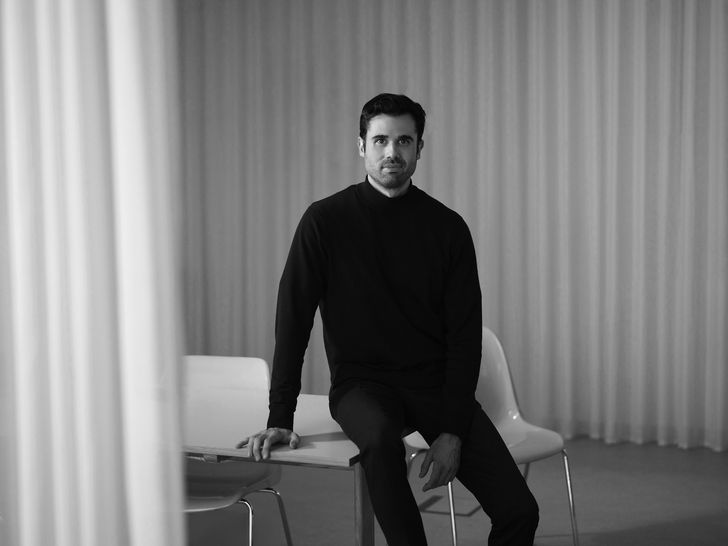
View gallery
A partner at Wardle, James Loder drives innovation through a technology-led design process. With an interest in material expression, he compels design to be responsive to people and environmental objectives, and seeks opportunities to create meaningful connections with Country and place.
Image: supplied
We’ve started rethinking our use of imagery. While impressive, these tools aren’t inherently useful unless we approach them differently. With Midjourney, we’re experimenting with ways to enhance already established ideas, develop concepts, or provide visual material for early client discussions. This diverges from the conventional idea of using AI to design buildings and opens up creative avenues.
These AI models are essentially basic versions of ourselves, drawing on a wide range of information and influences. In a way, using Midjourney is like working with a junior team member, guiding them with specific prompts to develop an idea. As these tools evolve towards more advanced, sentient capabilities, we anticipate more creative and interesting outputs. For now, their value lies in how we curate and integrate their outputs into our projects or external communications.
Limitations in concept design
Gwyllim Jahn: Tools like Midjourney seem optimised for creating highly likable images on platforms like Instagram. However, I’m not convinced that this is the most useful approach for concept design in architecture. Training models on existing projects limits us to ideas that have already been produced. The real potential of these tools should be to expand the range of design ideas and the way we think about architectural concepts. What do you see as the biggest limitations of tools like Midjourney for concept design?
Debbie-Lyn Ryan: We just use things when they are useful. So, staff that have problems with English will use ChatGPT, and when we want high resolution, we will use Gigapixel. We’ve been using Midjourney more as part of the design process. For example, where we’re talking about something, we might ask, “What would it look like if we cross this with this?” To be honest, it’s all discarded, but it does limber you up in the design process.
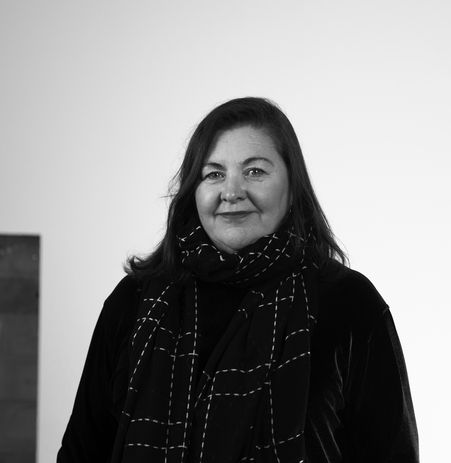
View gallery
Debbie-Lyn Ryan is the owner of McBride Charles Ryan and has more than 30 years’ experience in design and the built environment. She believes that architecture
should never relinquish experimentation and uses design of all scales as a means to this end.
Image: supplied
Automating documentation
Roland Snooks: What aspects of practice do you want to automate? What are the things that you don’t want to be doing?
Debbie-Lyn Ryan: The really boring bits, like schedules. I believe it’s crucial for people to have a broad understanding of all aspects of architecture. This comprehensive knowledge contributes significantly to creating more valuable architectural work. My concern is that relying too much on technology might lead to a bit of laziness in the field. On the other hand, it could also motivate people to try harder.
Ninotschka Titchkosky: There’s an important aspect of the conversation we haven’t fully explored yet – the construction industry. It’s one of the least digitised industries, heavily unionised, and currently, there’s a slim chance of turning AI-generated images into reality on a large scale.
We might have many brilliant ideas, but the real challenge lies in realising them, especially at scale. The most significant work to be done is bridging the gap from design to actual production and transforming the construction industry. Without this shift, no matter how innovative our designs are, they won’t have a substantial impact.
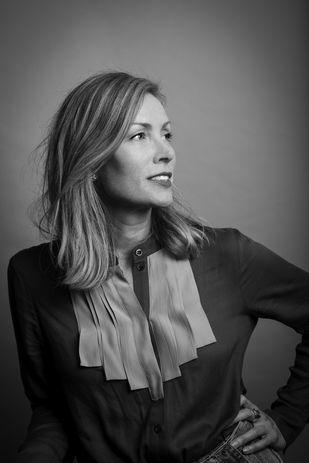
View gallery
As an architect and former co-CEO of BVN, Ninotschka Titchkosky wants to change the way we build. She is on a mission to realize smarter and more creative solutions that are better for the planet, especially by using robotics, advanced technologies and new materials.
Image: BVN
Roland Snooks: I agree with you. Automation is likely to play a significant role in various aspects of architecture practice, especially where large datasets are involved. We produce a lot of data through drawings and models, and there’s already a trend towards text-to-model tools. However, automation will extend to other, less obvious parts of construction and practice – for example, contract administration. Companies like Aconex, with their extensive databases, have a wealth of knowledge that surpasses any single architect’s understanding.
It wouldn’t surprise me if these companies start automating the entire process of contract administration. This raises a question about the impact on our practice, particularly in terms of fee structures. If a significant portion of our work, like contract admin, is taken over by software, what does that mean for revenue and the nature of our practice?
James Loder: The most significant impact of automation in architecture will likely be in the documentation of projects. Imagine a universal databank accessible to all architects, containing all the relevant codes and systems, integrated and updated in real-time. This automation could drastically reduce the scale of large-scale practices, shifting the focus to managing the integration of these tools. This shift would also change how we manage and resource projects, allowing for more predictive team-building around projects. While the visual aspect of architecture, like images, is intriguing, it’s the operational side that will see the most transformation due to automation and technology. The constuction industry, often bogged down in the nitty-gritty details, could also benefit significantly from these advancements.
Ninotschka Titchkosky: Automation could change the market that you operate in. For example, you can plug in all the codes of a particular place in a way that really opens up the market to work in different locations more readily. It’s interesting to imagine how fluid it could become over time as services are easier to buy globally.
What is most valuable to automate?
James Loder: I think the hardest thing to automate will be the high-level creative and strategic critical thinkers in a practice.
Roland Snooks: We used to think creative and strategic thinking would be hard to automate, but it turns out they aren’t as unique to humanity as we originally thought.
James Loder: The difference lies in how humans relate to each other’s creations. Using an office as an example, where there are numerous threads producing many iterations, it’s similar to the influx of ideas in Midjourney. What makes these creations intriguing is the human touch. When a machine generates content, it often lacks emotional connection – the human element.
There might emerge a new appreciation for what’s “handmade” or derived from human creativity. Even though anyone can replicate imagery, the images, no matter how beautiful, require interpretation for actual construction.
Debbie-Lyn Ryan: When I look at a lot of those images, there is a lack of humanity in them. And I just think that people might start looking for that humanity more, as they have in other things. They will look for things that are not replicated. A lot of the processes of architecture have removed the creativity of the individual architect. And I’m hoping that AI might actually help bring it back.
Impact on practices
Ninotschka Titchkosky: What we don’t talk about much is how AI will impact our business models. One reason large practices might be more empowered is because they can put more investment into AI. Traditionally, as architects, we’ve used a fee-for-service model. Then, we pay our people, we pay ourselves, and from whatever’s left over, we might tip a bit back into the practice. Whereas the rate of technological change that we’re confronting requires a different idea about the investment that you make into the business. This is going to be a real challenge for a lot of practices to get their heads around.
In terms of digital fabrication and robotics, we started that journey in about 2016 and haven’t stopped since then. When we look at images from Midjourney, and we think about digital fabrication, we can join the dots on all the components – and this affords us an entirely new proposition that we haven’t previously been able to achieve.
Xavier De Kestelier: Image generation is just the beginning and doesn’t have a massive impact yet. However, it’s a clear indicator of the rapid pace of technological change. Comparing the state of technology a year and a half ago to now, the progress is significant. Soon, we’ll see this technology extend to creating 3D and BIM models. These models are rudimentary now, but they will continually improve.
This shift will inevitably change many aspects of our industry, especially how we charge for projects. We’re moving away from a model that relies heavily on time and effort and towards one where design isn’t just about producing drawings and renders. Hopefully, this means we can spend more time on the creative aspect of designing, rather than just on production. I believe that while automation will infiltrate many aspects of our design process, it won’t replace the creative aspect – the generation of ideas. This is where architects excel: in conceptualisation and ideation.
What should automation be achieving?
Debbie-Lyn Ryan: My hope is that AI will allow architects to control everything again, as they once did. The risk is dumped on us. So, if we’re holding the risk, maybe we can control the whole thing because the tools will be more efficient.
If we are more efficient, particularly in that documentation phase, maybe we will have more time to think about other things. Even in planning there could be more concentration on what humans really need, instead of just continuing to shift out to the suburbs. Maybe people will have more time to think about what’s an optimum solution.
Ninotschka Titchkosky: I wonder if the most valuable part of AI is that we could genuinely bring everything together. We could bring regenerative design goals together with the values that we have together with eliminating waste and a range of other things. In the end, someone has to input the values, right? But I’m hopeful that something about the value system and value judgements that we make, and how they influence the outcome, will still matter.
Rafael Contreras: The goal is to leverage AI for automating and streamlining the documentation phase in architectural projects, along with reducing the extensive coordination with various specialists (such as structural and mechanical engineers) to enable architects to invest more time in project conceptual- ization and design.
It is crucial to envision the future and understand the importance of evolving our industry, and AI presents a significant opportunity for this transformation. It is difficult to believe that designing and building a 40-storey tower takes about four years – this is simply too much time, especially for the era in which we live.
Ninotschka Titchkosky: Do you want this dossier to make the industry feel threatened or do you want them to harness the potential that is possibly in front of them to be part of a change that we can make more positive? How do we use AI to save the planet or how do we use AI to actually achieve genuine circularity? Don’t we want to get people to gear up around this technology, which will be upon us whichever way we go, in a way that works to our benefit? I get nervous about articles that suggest everything is a threat. Yes, AI is a threat, but at the same time it’s an opportunity, if we can harness it in the right way.
Debbie-Lyn Ryan: What would I like to see? AI take architecture beyond economic rationalism.
James Loder: I was going to make a joke that it’s nice of you to bother asking us, because you could have just asked Chat GPT and got a very comprehensive answer to all of this. And that’s the point: humans want to hear from other humans, not machines.






